Sometimes being the first means being the first to fall, the first to be forgotten.
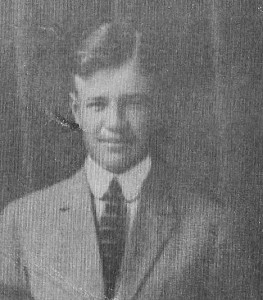 And so it was with Paul Stevens Hollis of Fort Worth, who in 1922—a century ago—invented the world’s first powdered soft drink mix.
And so it was with Paul Stevens Hollis of Fort Worth, who in 1922—a century ago—invented the world’s first powdered soft drink mix.
Yes, before there was Kool-Aid there was Poly Pop.
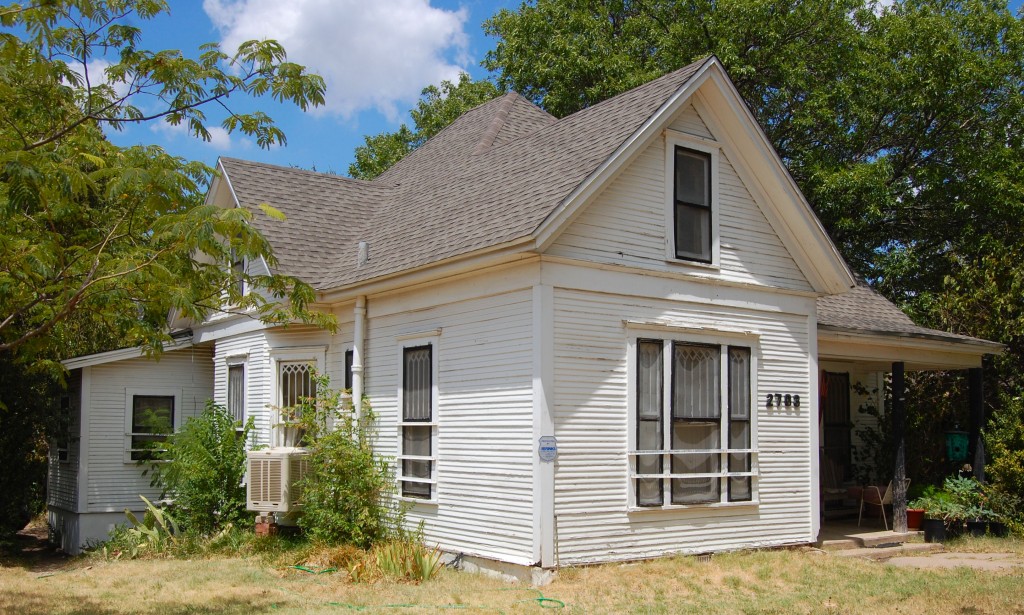 Poly Pop was born in this 1907-vintage house at 2703 Avenue E across Conner Avenue from Polytechnic High School.
Poly Pop was born in this 1907-vintage house at 2703 Avenue E across Conner Avenue from Polytechnic High School.
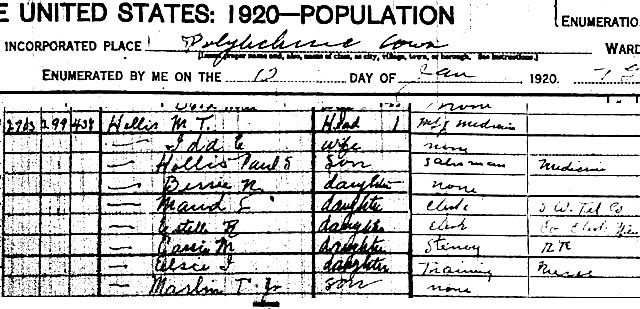 Paul Hollis, born in Georgia on February 18, 1892, was the son of an entrepreneur. His father Marlin, listed in the 1920 census as a manufacturer of medicine, made and sold salves and ointments. Son Paul sold those salves and ointments.
Paul Hollis, born in Georgia on February 18, 1892, was the son of an entrepreneur. His father Marlin, listed in the 1920 census as a manufacturer of medicine, made and sold salves and ointments. Son Paul sold those salves and ointments.
But Paul soon had a sweeter notion. His recipe for success: citric acid, certified color, caffeine, and artificial flavor. Just add sugar and water and stir with entrepreneurial zeal.
In an interview with the Star-Telegram, older brother Chester Hollis recalled Paul’s early research and development: “He had a keg on the front of his car and would carry paper cups inside. He would go to schools and give it [Poly Pop] to the kids to see if they liked it.”
They liked it.
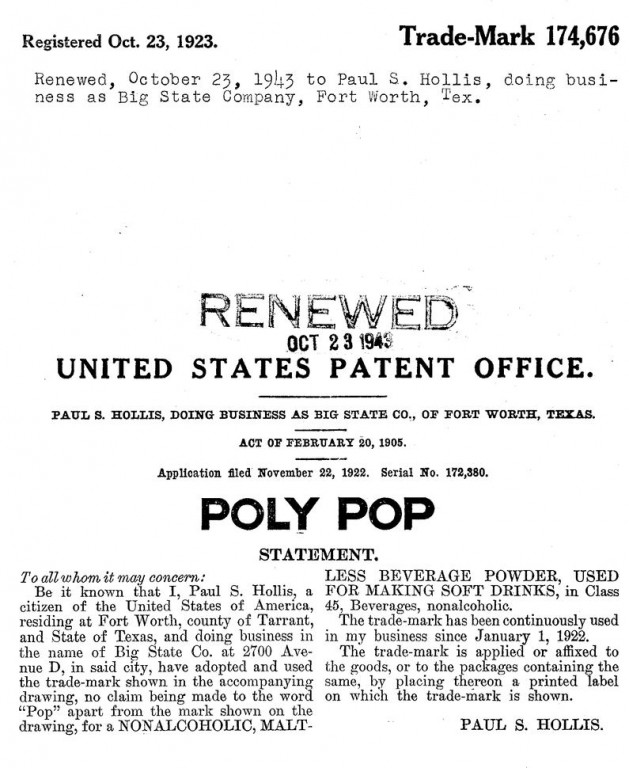 So, Paul Hollis patented his invention and registered the trademark “Poly Pop” in 1922 and began doing business as “Big State Company.”
So, Paul Hollis patented his invention and registered the trademark “Poly Pop” in 1922 and began doing business as “Big State Company.”
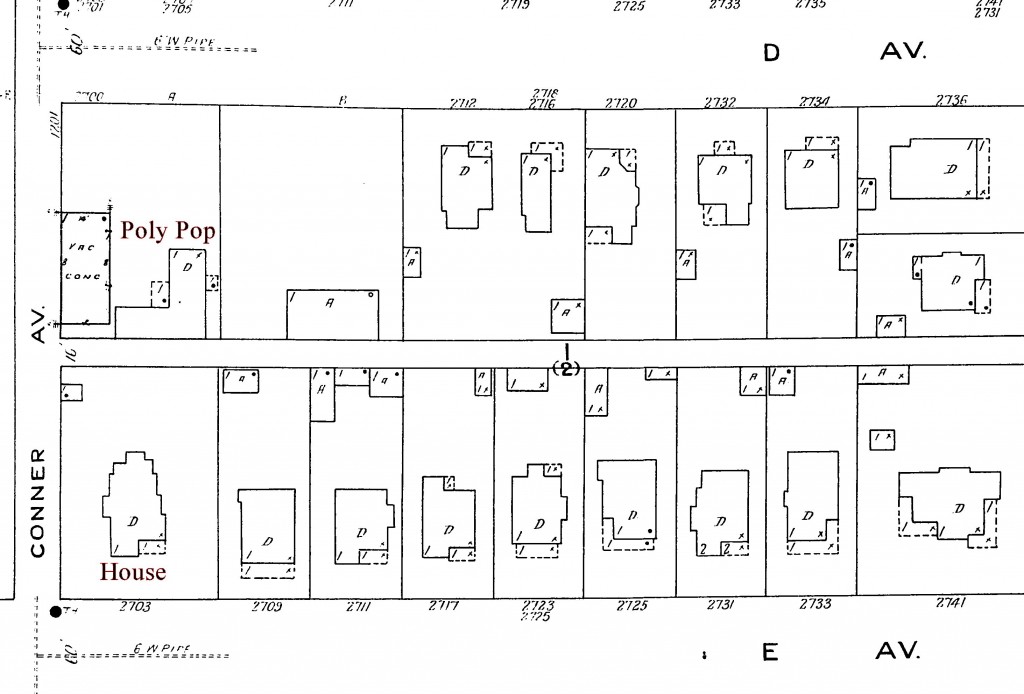 He soon went into full-scale production, manufacturing Poly Pop in a building on Avenue D behind the family house.
He soon went into full-scale production, manufacturing Poly Pop in a building on Avenue D behind the family house.
 Hollis expanded his business, advertising in the Star-Telegram classified ads for “agents to sell Poly Pop, a good drink.”
Hollis expanded his business, advertising in the Star-Telegram classified ads for “agents to sell Poly Pop, a good drink.”
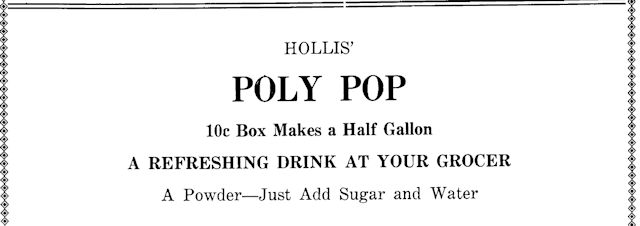
Hollis placed this ad in the 1925 Poly High School yearbook.
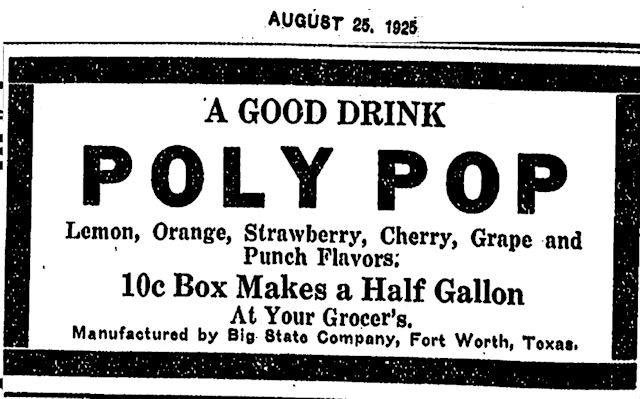 Star-Telegram ad. Again Hollis was modest in his promotion: “a good drink.”
Star-Telegram ad. Again Hollis was modest in his promotion: “a good drink.”
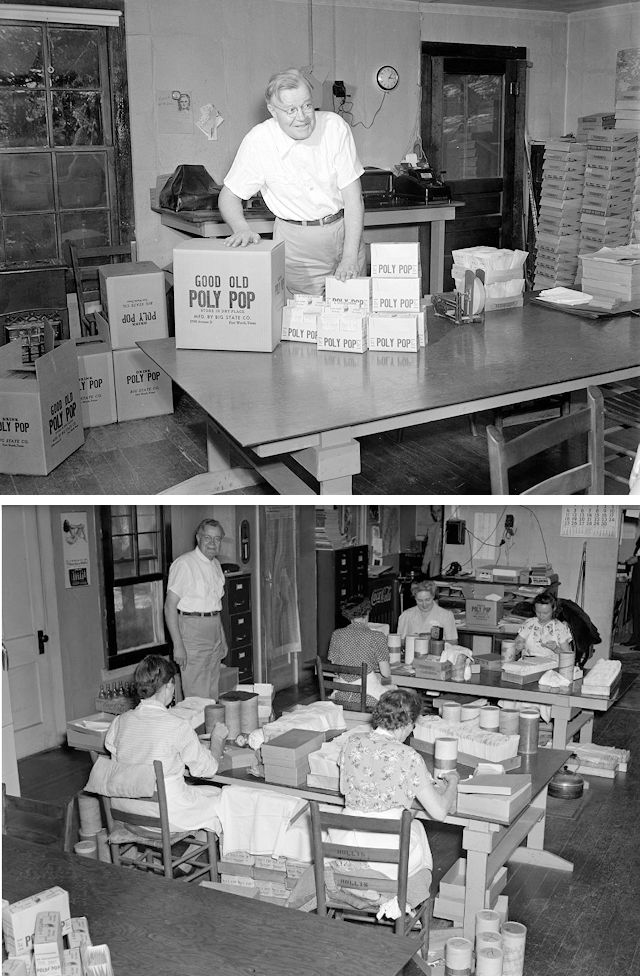
By the time Poly Pop reached its peak of popularity in the 1930s, Hollis (pictured) employed two hundred women at his plant, the Star-Telegram said. (Photos from UNT Libraries Special Collections.)

Poly Pop was sold in stores in adjacent states.
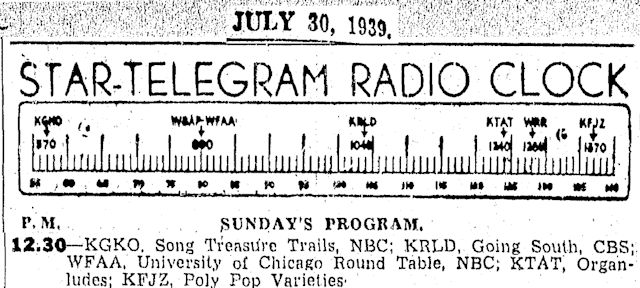 Poly Pop sponsored a program of music on radio station KFJZ.
Poly Pop sponsored a program of music on radio station KFJZ.
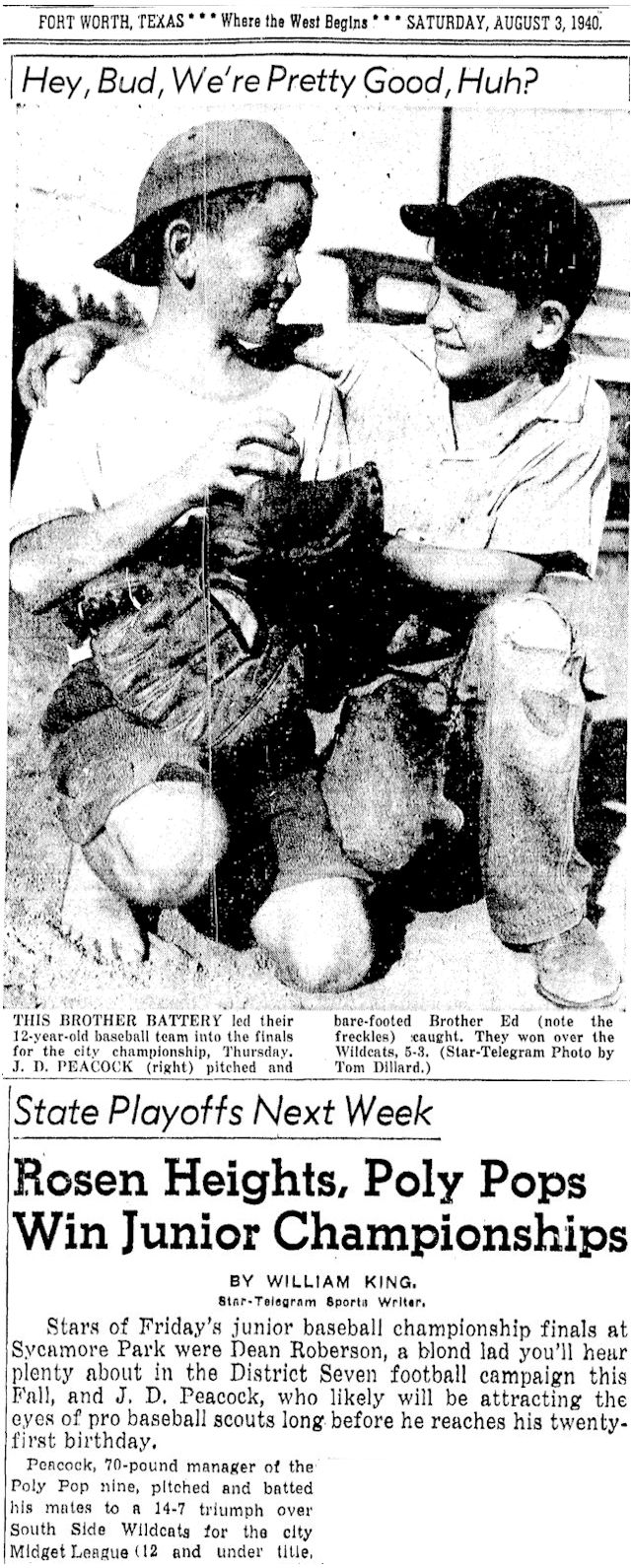 Poly Pop sponsored a youth baseball team. Two members of the team—and of the Poly Pop generation—were Ed and J. D. Peacock of the Poly family of athletes and firemen.
Poly Pop sponsored a youth baseball team. Two members of the team—and of the Poly Pop generation—were Ed and J. D. Peacock of the Poly family of athletes and firemen.
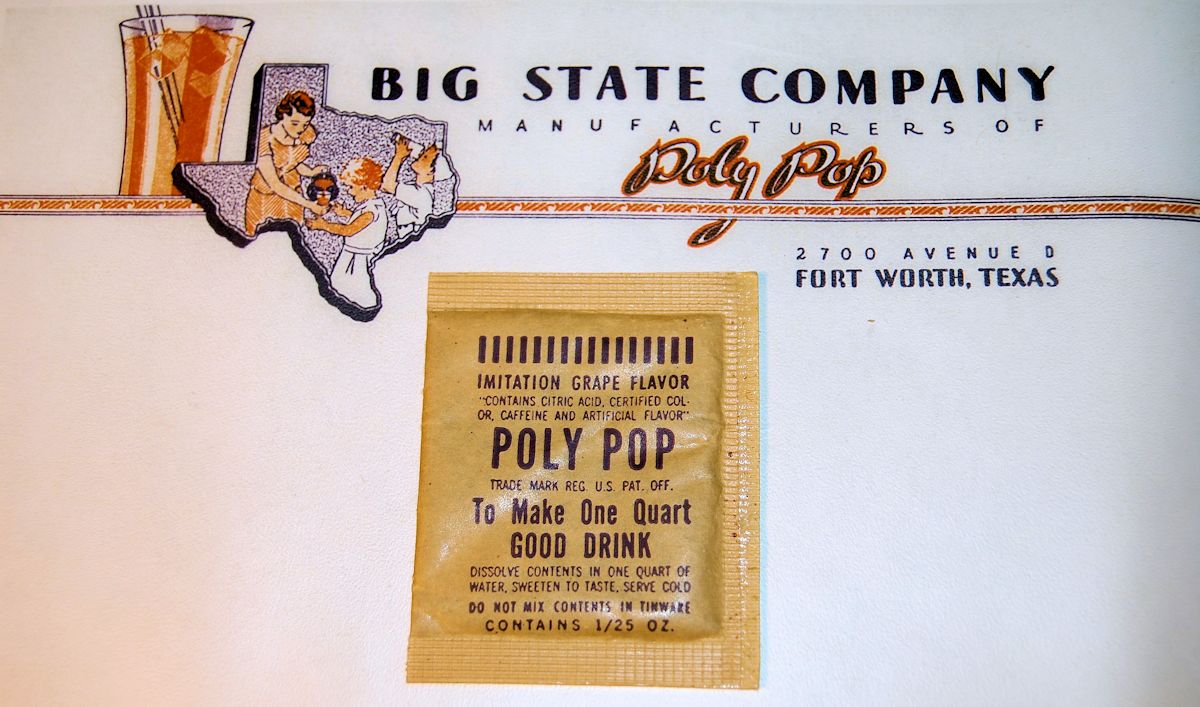 This Big State letterhead and a packet of grape Poly Pop were bought online. A penny packet—1/25th of an ounce—of Poly Pop flavored one quart of water. A nickel packet flavored eight quarts.
This Big State letterhead and a packet of grape Poly Pop were bought online. A penny packet—1/25th of an ounce—of Poly Pop flavored one quart of water. A nickel packet flavored eight quarts.
Some kids didn’t bother to add sugar to the powder. Or even water. They ate the powder straight from the packet.
“You sure puckered up when you licked it,” a Poly resident told the Star-Telegram years later.
And Joe Jopling, a 1943 graduate of Poly High School, recalled: “Without lots of [sugar], Poly Pop was a very bitter powder. I remember how disappointed I was after my first taste of a ripped-open free packet. But it was great after water and sugar were added.”
That powder may have been bitter, but it brought sweet success to Paul Hollis. He made a lot of dollars a penny and a nickel at a time. Hollis saved the money he made from his invention and invested $15,000 in rental property and stocks. He became a millionaire. Then he gave most of his money away. Each Christmas Hollis, who had no children of his own, invited every child under age twelve to come to the Poly Pop factory. He gave each child a bag of gifts and a quarter. When the tenants of one of his rental properties had a baby, Hollis gave them a free month’s rent.
Another Poly High School graduate and another Peacock—Don—recalled: “He was a kind and generous man. I recall going into his place at Christmas, sign a sheet and pick up a box with candy and fruit in it. That was a good present back then in a family of nine kids. He would often catch some of the boys playing around there and line us up and pitch a penny to see who could get to it first. At times he would pitch a dime, and I never lost one of those.”
Joe Jopling suspected that Hollis was generous even with his trash. Jopling recalled: “We used a lot of Poly Pop but never bought it. There were always rejects in the trash back of the [Hollis] house. Looking back, I think Mr. Hollis might have enriched his trash because a lot of the discarded packets looked just fine.”
 Hollis also established a fund to maintain Polytechnic Cemetery, where his parents are buried.
Hollis also established a fund to maintain Polytechnic Cemetery, where his parents are buried.
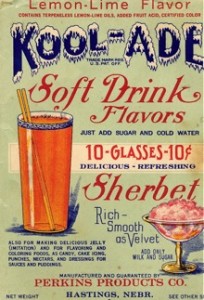 Poly Pop was on the market for thirty years, but in 1927 Hollis began to face competition from a new kid on the block—a Kool-Aid Kid. In Hastings, Nebraska, young amateur chemist Edwin Perkins invented a similar powdered drink mix. Perkins called his invention “Kool-Ade” (soon renamed “Kool-Aid”) and began to sell it by mail order and in stores.
Poly Pop was on the market for thirty years, but in 1927 Hollis began to face competition from a new kid on the block—a Kool-Aid Kid. In Hastings, Nebraska, young amateur chemist Edwin Perkins invented a similar powdered drink mix. Perkins called his invention “Kool-Ade” (soon renamed “Kool-Aid”) and began to sell it by mail order and in stores.
Down in Fort Worth, Paul Hollis needed to adapt to the new challenge. But Chester Hollis told the Star-Telegram that brother Paul “had his way of doing things, and that was it. I told him the package was not appealing, that someone would come along with a more attractive packet. He didn’t care. Well, Kool-Aid did, and Poly Pop gradually dwindled down.”
Edwin Perkins’s Kool-Aid packet was certainly more eye-catching than Hollis’s Poly Pop packet. The Kool-Aid packet was printed in color and featured a picture of a glass of Kool-Aid. The letters of the logo “Kool-Aid” were encrusted in ice. Hollis’s Poly Pop packet was printed in black ink in a plain font with no artwork. And Poly Pop’s advertising slogan remained modest: “Good Old Poly Pop.”
The competition from Kool-Aid eventually was too much for Poly Pop, especially after Perkins sold his company to corporate giant General Foods in 1953. That’s the year Hollis gave in and sold his Poly Pop formula to a man from Garland, Texas. The new owner never used the formula.
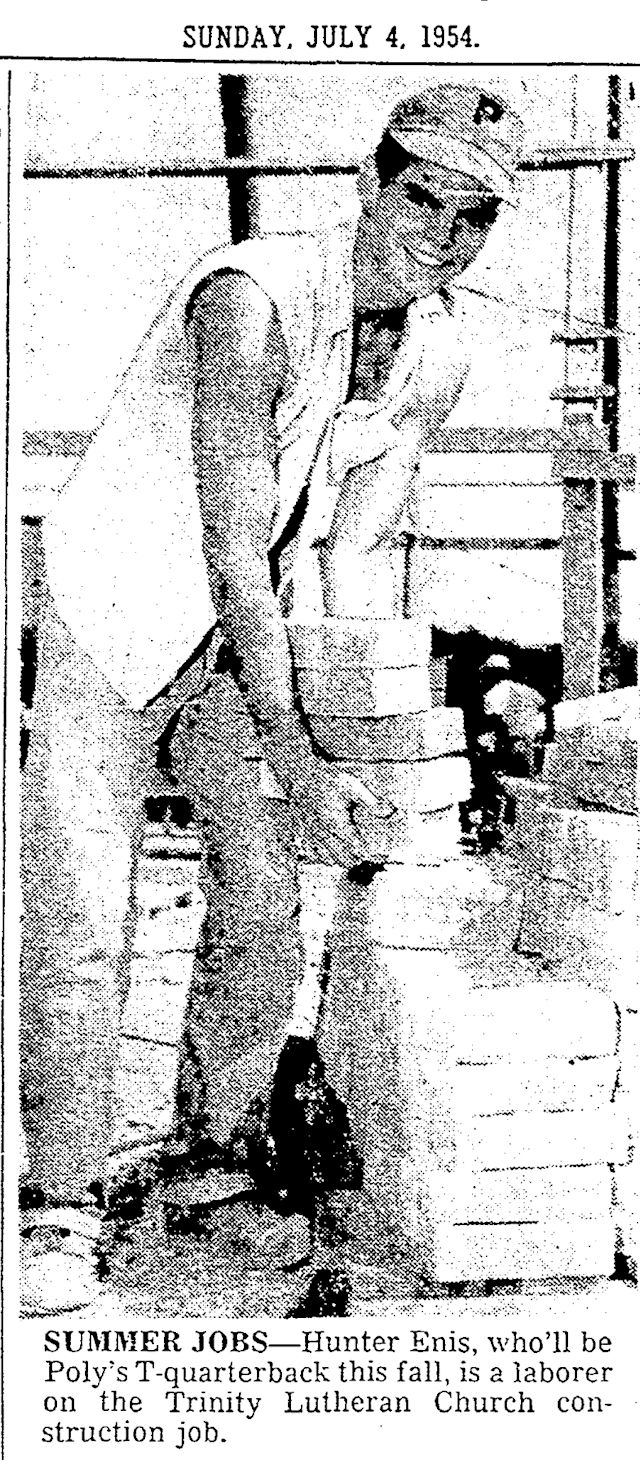 Another member of the Poly Pop generation was George Hunter Enis, football star at Poly High, TCU, and in the AFL.
Another member of the Poly Pop generation was George Hunter Enis, football star at Poly High, TCU, and in the AFL.
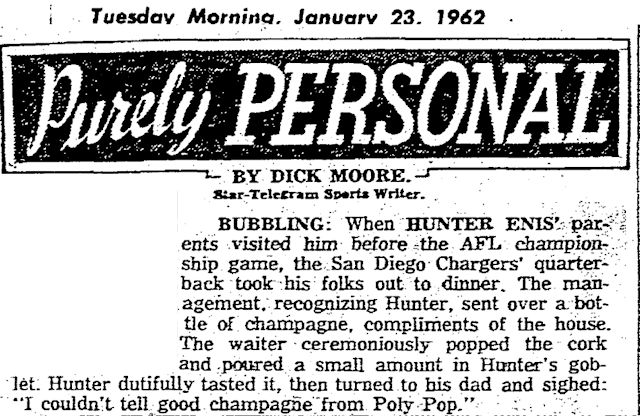 In January 1962 Enis recalled Poly Pop.
In January 1962 Enis recalled Poly Pop.

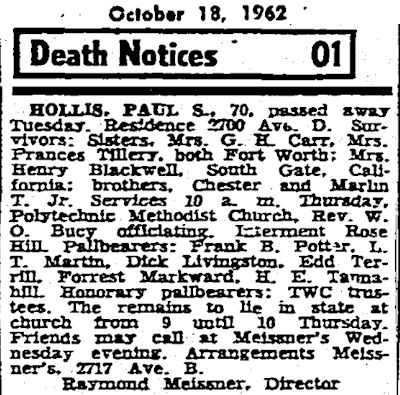 But by January 1962, of course, Poly Pop was gone. And nine months later, so was its inventor. Paul Stevens Hollis died on October 16 in the little wooden house on Avenue D where he had invented Poly Pop. He is buried in Rose Hill Cemetery.
But by January 1962, of course, Poly Pop was gone. And nine months later, so was its inventor. Paul Stevens Hollis died on October 16 in the little wooden house on Avenue D where he had invented Poly Pop. He is buried in Rose Hill Cemetery.
A Poly High School building now occupies the lot where the Poly Pop factory stood.
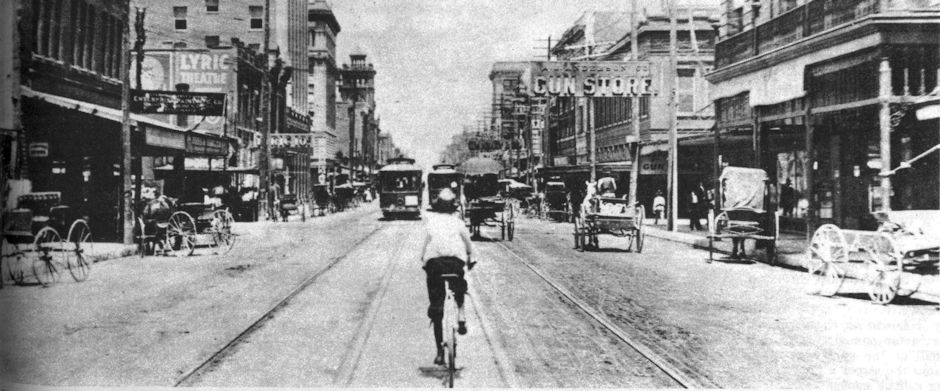





My daddy was born in 1925 in Chico, Wise County Tx. They came to Houston when he was around 11 to Houston. The drink mix had to have been very memorable for this poor little boy who became hesd of household the same year. All my life (born in 1957),it didn’t matter what I was drinking, he’d tease and say “Hey sister give me a swig of your Poly Pop. Thank you so much for this story.
I ran across a nice photo of Poly Pop on display next to Kool Aid on the counter of a grocery store. Traces of Texas reader Karen Doskocil kindly sent in this stellar circa 1948 photo of her great grandmother, Altie Lackey Burt, along with Altie’s son Redin in Burt’s Grocery on South Covington Street in Hillsboro. Redin and his wife owned the store. The details here are pretty astonishing. You can read every label pretty much on everything on and behind the counter. Astounding clarity.
https://www.facebook.com/TracesofTexas/photos/a.162532927112178/2952312591467517/
My grandmother, Gladys Gilley, who graduated from Poly High School in 1925, always asked me if I wanted some Poly Pop. It was Kool-Aid. But she never called it that. It was always Poly Pop, even in 1990.
Mom, Margaret Lee ,graduated from Poly about 1932 or 33. , younger sister,Helen Lee, the following year.Then Robert Lee, Dorothy, Mary Louise & finally Jimmy (James) maybe about 1949? “The Lee Sisters” used to go by bus to the military base & were “Dime A Dance” girls… volunteers to help raise money for the War effort. Mom said it was lots of fun! I have a few pictures.
Thank you for visiting this site. Unfortunately the author, Mike Nichols, has passed away and we are working on a solution on how best to preserve it.
I remember Mr Hollis & Poly Pop well! My grandmother, Grace Lee, lived on Ave. E & raised 6 children there, including my mother,Margaret. All went to Polytechnic High School. Anytime we were at grandmother’s we would walk to the PolyPop factory and visit Mr Hollis who I recall as kind & would always give us free samples. We just ate it out of the package as was sweet & tart. Wonderful memories. I can still imagine the aroma of it!
Hi is there anyway I can buy some old time poly pop mix
I bought a packet on eBay several years ago but can’t vouch for the shelf life of the contents. I bought it for the package.
My aunt Irma Jewell Lea, a graduate of Polytechnic High school in the early 1930s, worked for Poly Pop. It was her first job. The family lived on Avenue J.
We are trying to gather information about the Carr/Hollis family, and anything else you can share would be helpful. Do you know if there archives with names of Poly High alumni and their class year?
Gerald, my blog post has all I know about Paul Hollis. The high school, the FWISD’s Billy Sills archive, and the downtown public library have Poly yearbooks, but beyond that I do not know if any resource has the name and class year of Poly grads.
Mom, Margaret Lee ,graduated from Poly about 1932 or 33. , younger sister,Helen Lee, the following year.Then Robert Lee, Dorothy, Mary Louise & finally Jimmy (James) maybe about 1949? “The Lee Sisters” used to go by bus to the military base & were “Dime A Dance” girls… volunteers to help raise money for the War effort. Mom said it was lots of fun! I have a few pictures.
What a very sweet and interesting piece of history!I would’ve loved to known this person, he was obviously very special.
His sister Maude Hollis Carr was my grandmother and her son Thomas Hollis Carr was my father. Thank you for this.
Paul Hollis and his Poly Pop were a big part of Polytechnic’s history.
I am the daughter of George Harvey Carr JR and Julia Morin Carr. I was born in 1957. George and my Mom, Julia, divorced. I was called Holly Carr. I was adopted and my last name changed and they called me by my First name Stephanie. My father (George H. Carr Jr.) was never spoken of, all I ever knew was his name. As a child, I recall spending time with Mrs. Francis Tillery, but Mom never told me she was related, I can recall seeing pictures of me and some other children at Francis Tillery’s house.
Good memories of Mr Hollis!
In 1976 I met a mechanic named Don Madison whose shop was in Wedgwood near Trail Lake Drive and I-30. Don made some extra money by refurbishing old Mustangs and pickup trucks and then reselling them. Not being a native Fort Worthian I had no childhood knowledge of Poly Pop, but my first introduction to it came in Don’s garage when he showed me the old 1930s pickup truck that he had purchased for restoration that had the Poly Pop logo on the doors. I don’t know what he did with it, but have often wonder (after learning more about the Pop) what ever happened to that neat old delivery truck. Anybody have any clues as to it whereabouts?
Dan, I have never heard of that truck, had no idea that Hollis had any kind of “fleet.” What a great relic of East Side history that old truck would be.
My mother has a lot of memories of Mr. Hollis and Poly Pop- and the Peacock Boys! (I’m a second generation Poly Girl.)
My Grandfather George Womack owed the house up the block, 2733 Ave. E, and we lived in that house in the 50’s. I was one of the lucky kids that played in the closed factory (with Mr.Hollis’ permission), and received 1 packet of Poly Pop each when he was in his office. I remember it all perfectly. Big part of my childhood.
My parents kept a metal/tin narrow banner about 1.5″X 18″ that is totally painted red except for the big block white lettering embossed the height and length of the banner which of course spells out “POLY POP”. I treasure it as a memento of the poly neighborhood. My grandmother’s sister lived at the intersection of Rosedale and Conner until shortly before I stated school there in 1964.
Kris, what a great relic of old Poly. Our generation missed Hollis and Poly Pop, but their legend lives on.
I remember the Poly Pop man. He was well known to most of the kids that lived in the neighborhoods around Poly High school in the late 1940s and early 1950s. My family lived about a block from his Poly Pop operation. Most kids just poured the tart concoction in their hand and licked it. The Christmas collection of sweet treats that he handed out was always special.